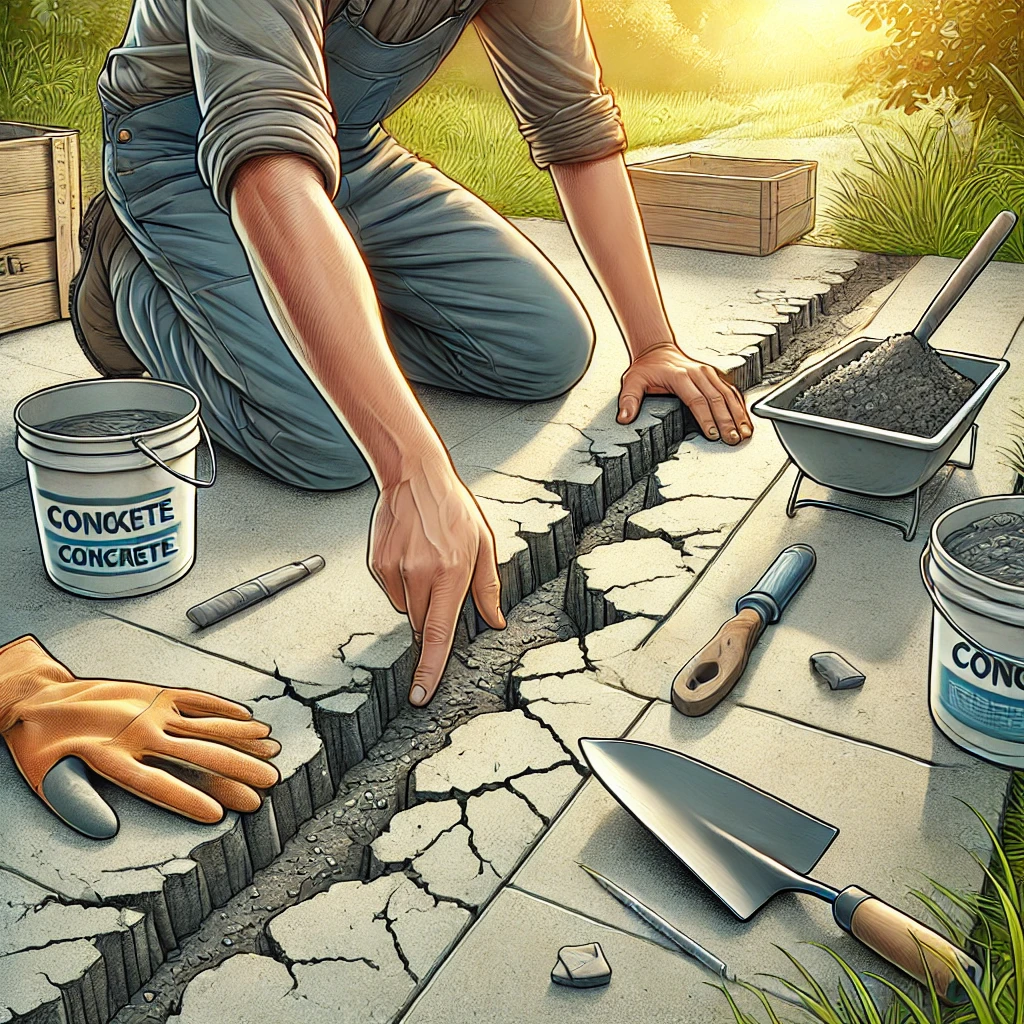Cracks in concrete are a common issue, whether it’s in a driveway, patio, or floor. These cracks not only affect the appearance of the surface but can also compromise its structural integrity over time. Fixing cracks early on is essential to prevent them from growing larger and causing more significant problems. The good news is that repairing concrete cracks is a manageable task that can be done with the right materials and techniques. Let’s explore the steps to get your concrete back in shape.
Assessing the Damage
The first step in fixing cracks in concrete is understanding the type and severity of the damage. Cracks can vary from hairline fractures to larger gaps caused by settling or structural stress. Hairline cracks are often superficial and easy to fix, while larger cracks may require more intensive repair methods.
Inspect the crack thoroughly to determine its depth and width. If the crack is wider than half an inch or shows signs of significant movement, it may indicate a more serious issue. In such cases, consulting a professional, like a Concrete Paving Contractor, can help ensure the repair is done correctly. For smaller cracks, you can proceed with a DIY approach using basic tools and materials.
Cleaning the Crack
Proper preparation is key to a successful concrete repair. Begin by cleaning the crack to remove any dirt, debris, or loose concrete. Use a stiff-bristle brush or a wire brush to scrub the area thoroughly. If there are weeds or grass growing in the crack, pull them out and use a pressure washer to remove stubborn roots or soil.
After brushing, rinse the crack with water and allow it to dry completely. For larger cracks, you can use a vacuum or compressed air to remove any remaining debris. A clean surface ensures that the repair material adheres properly and provides a durable fix.
Choosing the Right Repair Material
The type of repair material you use depends on the size and nature of the crack. Here are some common options:
- Concrete Caulk: Ideal for hairline cracks, concrete caulk is easy to apply and provides a flexible seal that can withstand minor movements.
- Epoxy or Polyurethane Filler: These materials are perfect for larger cracks as they bond strongly to the concrete and offer excellent durability.
- Hydraulic Cement: Best for cracks that are actively leaking water, hydraulic cement sets quickly and creates a watertight seal.
Select a material that suits your needs and follow the manufacturer’s instructions for preparation and application.
Filling the Crack
Once the crack is clean and dry, it’s time to fill it. For smaller cracks, squeeze the repair material directly into the crack using a caulk gun or applicator. Smooth the surface with a putty knife or trowel to ensure an even finish. For larger cracks, mix the filler according to the instructions and use a trowel to press it firmly into the crack. Work in layers if necessary, allowing each layer to set before applying the next.
After filling, smooth the surface and remove any excess material. If you’re working with epoxy or polyurethane, keep in mind that these materials set quickly, so work efficiently. For hairline cracks, applying a second coat may be necessary to ensure a strong seal.
Finishing Touches
Once the crack is filled, allow the repair material to cure as per the manufacturer’s recommendations. This process can take anywhere from a few hours to a couple of days, depending on the material used. Avoid walking or driving over the repaired area until it’s fully cured.
For a more polished look, you can blend the repair with the surrounding concrete. Use a concrete patching compound to cover the area and feather the edges with a trowel. If the color of the repair doesn’t match the existing concrete, consider applying a concrete stain or paint to create a uniform appearance.
Preventing Future Cracks
While it’s impossible to prevent all cracks, there are steps you can take to minimize the chances of new ones forming. Seal your concrete surfaces with a high-quality concrete sealer to protect against moisture and freeze-thaw cycles. Ensure proper drainage around the area to prevent water pooling, which can weaken the concrete over time.
Regular maintenance, such as cleaning and inspecting for early signs of damage, can also go a long way in preserving your concrete surfaces. If you notice cracks reappearing or spreading, don’t hesitate to consult a Concrete Paving Contractor for professional advice.
Bringing It All Together
Fixing cracks in concrete might seem daunting at first, but with the right approach, it’s a task anyone can handle. By assessing the damage, cleaning the area, and using the appropriate repair material, you can restore your concrete to its original condition. Whether you’re patching a driveway, patio, or floor, taking the time to do the job properly will save you from bigger headaches down the road.
With a little effort and care, your concrete surface will look as good as new and stay that way for years to come. And if the project feels too big to tackle on your own, remember that professionals like a Concrete Paving Contractor are just a call away to help you achieve the best results.





Comments